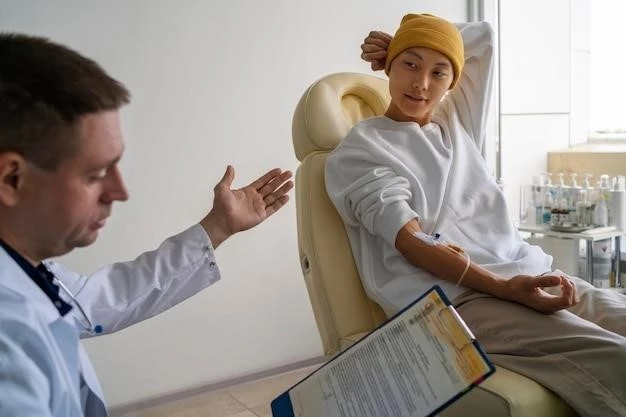Causes of Acrocephaly
– Genetic mutations
Genetic mutations, like mutations in FGFR2 gene٫ can lead to acrocephaly by affecting cranial bone growth. Understanding these mutations is crucial for accurate diagnosis and tailored treatment plans.
– Environmental factors
Factors like maternal smoking, advanced parental age, and certain medications can contribute to acrocephaly. Avoiding such environmental risks during pregnancy is essential for preventing this condition.
– Fetal constraint
Fetal constraint in the womb, from factors like multiple pregnancies or oligohydramnios, can restrict normal skull growth, leading to acrocephaly. Early detection and intervention are key to managing this cause effectively.
Symptoms and Diagnosis of Acrocephaly
– Abnormal head shape
Individuals with acrocephaly often have a noticeably tower-shaped or pointed head due to premature fusion of skull bones. This distinct cranial shape helps in clinical identification and prompt diagnosis.
– Early closure of skull sutures
Acrocephaly is characterized by the premature closure of skull sutures, impacting head shape and brain growth. Early detection through physical examination and imaging tests is crucial for timely intervention and management.
– Imaging tests for diagnosis
Imaging tests like X-rays, CT scans, and MRIs are essential for diagnosing acrocephaly, allowing healthcare providers to visualize cranial abnormalities and determine the extent of skull bone fusion. These tests play a vital role in treatment planning.
Treatment Options for Acrocephaly
– Helmet therapy
Helmet therapy, or cranial orthosis, is a non-invasive treatment method to reshape the head in infants with acrocephaly. Custom-fitted helmets are worn to redirect growth and correct skull abnormalities gradually, promoting normal head shape development.
– Physical therapy
Physical therapy plays a vital role in improving mobility, strength, and coordination in individuals with acrocephaly. Targeted exercises help address developmental delays and enhance overall physical function, contributing to a better quality of life.
– Surgery
Surgical intervention for acrocephaly may involve procedures such as cranial vault remodeling or reconstruction to correct skull deformities and allow for brain growth. Precision surgeries performed by skilled specialists can improve head shape and overall function significantly.
Surgical Procedures for Acrocephaly
– Endoscopic strip craniectomy
Endoscopic strip craniectomy is a minimally invasive surgical technique used to treat acrocephaly by releasing fused skull bones. This procedure helps normalize head shape and alleviate symptoms, leading to improved long-term outcomes for patients.
– Posterior vault distraction osteogenesis
Posterior vault distraction osteogenesis is a surgical procedure to gradually reshape the skull by creating controlled separation and new bone formation. This innovative approach is effective in correcting acrocephalic cranial deformities and enabling proper brain development.
– Frontal-orbital advancement
Frontal-orbital advancement surgery involves repositioning and reshaping the upper face and forehead to correct skull deformities associated with acrocephaly. This procedure aims to improve head shape, alleviate pressure on the brain, and enhance overall facial aesthetics.
Acrocephaly in Infants
– Developmental milestones
Infants with acrocephaly may experience delays in reaching developmental milestones due to head shape abnormalities. Monitoring milestones closely and early intervention through therapies can support their progress towards achieving important developmental stages.
– Feeding challenges
Acrocephaly in infants can lead to feeding difficulties due to altered oral anatomy and muscle function. Special feeding techniques and support from healthcare providers may help address these challenges and ensure adequate nutrition intake for optimal growth and development.
– Follow-up care
Regular follow-up appointments are essential for monitoring growth, development, and the effectiveness of treatment in infants with acrocephaly. Healthcare professionals can provide ongoing support, assess progress, and address any emerging concerns to promote the best outcomes for the child.
Genetic Factors in Acrocephaly
– Inherited syndromes
Acrocephaly can be associated with inherited syndromes like Apert and Crouzon syndromes, which impact craniofacial development. Understanding the genetic basis of these syndromes is crucial for comprehensive management and tailored care plans.
– Gene mutations
Gene mutations, such as changes in FGFR2, FGFR3, and TWIST1, play a significant role in the development of acrocephaly. Identifying these mutations through genetic testing helps in understanding the underlying causes and guiding targeted treatment approaches for individuals affected by this condition.
– Genetic counseling
Genetic counseling is vital for individuals with acrocephaly and their families to understand the hereditary nature of the condition. Guidance from genetic counselors helps in assessing risk factors, discussing family planning, and making informed decisions regarding genetic testing and management options.
Long-term Effects of Acrocephaly
– Cognitive development
Acrocephaly can impact cognitive development in children due to skull abnormalities affecting brain growth. Early interventions, educational support, and specialized therapies play a crucial role in promoting optimal cognitive functioning and academic success.
– Speech delays
Acrocephaly can contribute to speech delays in affected individuals, impacting communication skills. Early intervention with speech therapy and consistent monitoring by healthcare professionals are essential for overcoming these delays and promoting effective language development;
– Psychological impact
Acrocephaly can have a psychological impact on individuals, affecting self-esteem and social interactions. Psychological support, counseling, and interventions can help address emotional well-being and promote a positive outlook for those living with this condition.

Research and Advances in Acrocephaly
– Minimally invasive surgeries
– Cranial molding techniques
Cranial molding techniques, like helmet therapy, are non-invasive methods used to reshape the skull in infants with acrocephaly. These approaches aim to guide proper head growth and correct deformities, offering promising outcomes for affected individuals.
– Stem cell therapy research
Research on stem cell therapy holds potential for regenerative approaches to treat acrocephaly. By exploring the use of stem cells to promote bone growth and repair cranial abnormalities, scientists aim to develop innovative and effective treatment strategies for individuals with this condition.
